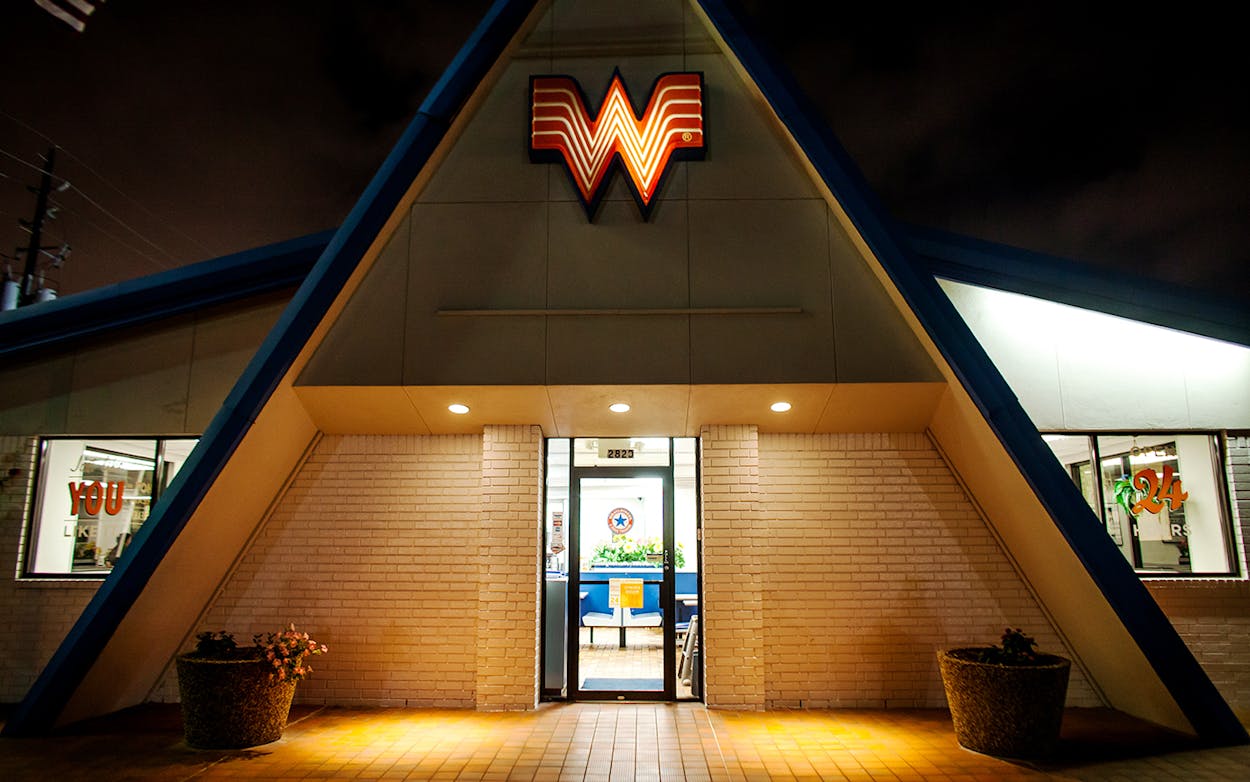Let’s start by making it clear that, at the moment, Whataburger isn’t officially for sale. After Reuters broke the news that it’s exploring the possibility of taking on a minority investor to fund expansion, the beloved San Antonio-based burger chain issued a statement: “Our company is growing and is always attractive to investors, we constantly get inquiries. We have always evaluated the opportunities that can accelerate growth and maintain the success of our brand, and we will continue to do so in the future.”
Whataburger has been privately held by the Dobson family since 1951. It’s no surprise that investors have been interested in the chain, which has more than 800 stores in Texas and other, lesser states. The fact that, as Reuters also reported, Whataburger has retained the services of investment firm Morgan Stanley to explore opportunities suggests that there might indeed be a greater possibility of a sale than in the past. A Whataburger source would only reiterate to Texas Monthly the message of the statement, while Morgan Stanley has declined to talk with reporters about its role.
The best-case scenario is that Whataburger takes on investors who give the chain the opportunity to expand in ways that preserve what its restaurants excel at, while also giving Texpats around the country the chance to enjoy a Triple Meat Whataburger or a Whatachicken without having to plot a return to their ancestral home. Imagine moving to California (there but for the grace of God go we) and not being forced to satisfy your late-night burger cravings at In-N-Out!
Unfortunately investors in other chains have shown a tendency to meddle a bit more than by merely funding an expansion. In 2015, North Carolina-based chicken chain Bojangles—which folks in the Tar Heel State love almost as much as Texans adore Whataburger—began an aggressive expansion push. Sales quickly dropped, by as much as 2 percent year-over-year during the following three years, and industry observers blamed a decline in the quality of the food. Taco Cabana, which has sat alongside Whataburger as one of the jewels in Texas’s array of fast food options, has had a rougher go with expansion. In 2012, Taco Cabana—which had been bought by the parent company of Burger King—was spun off under a new corporate parent and saw its quality decline and revenue drop over the next several years. (In 2018, with a renewed quality push, Taco C saw sales rebound, so these things aren’t necessarily terminal.) Schlotzsky’s, the Austin-founded chain that expanded aggressively in the early aughts, was bankrupt by 2004 and has been desperately seeking a new identity in the years since. Even outside the fast food game, investors and expansion can mess with the quality and profit of companies that exist to sell you something to eat—the Whole Foods/Amazon marriage hasn’t exactly been a smashing success on those fronts.
Presumably anyone looking to get on board with Whataburger would be interested in maintaining the sort of fierce brand loyalty from Texans that made a dude who sold prints of oil paintings of the store in romantic settings into a viral smash. People go to great lengths to show their Whataburger pride. They celebrate their weddings there; they dress their houses up as Whataburgers for Halloween; they freak out at the chance to buy Whataburger merch; they scoff at the suggestion that In-N-Out might even be in the same category. That’s brand power no one would want to lose, but big investment dollars often demand to have their say, which inevitably puts the magic formula at risk.
It’s too early to start speculating that the Whatapocalypse is coming, of course. The great irony for Texans is that the best-case scenario for a Whataburger expansion probably looks something like when In-N-Out invaded Texas in 2011. If adding locations without compromising quality is the goal, the California chain might represent the gold standard. It succeeded because of a smart, controlled strategy that involved building a brand new facility in Dallas to ensure that the quality of the meat never declined, and not attempting to blanket the entire country in stores.
Under most circumstances, we’d be loathe to suggest that the path forward for Whataburger would be to be more like In-N-Out, but in this case, the “don’t mess with California” approach to burger growth clearly worked. We’re all for introducing Whataburger to parts of the country that are served by inferior chains. We just hope they’re able to navigate any expansion they undertake in a way that keeps our hearts soaring at the sight of the iconic A-frame.
- More About:
- Business








